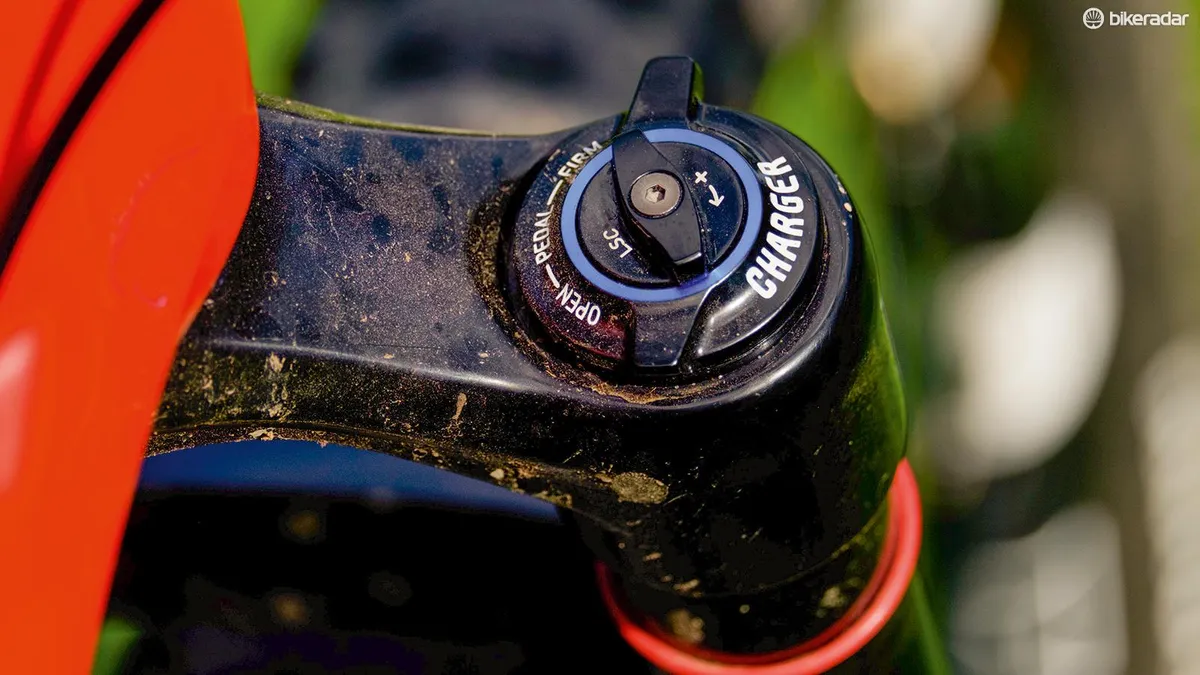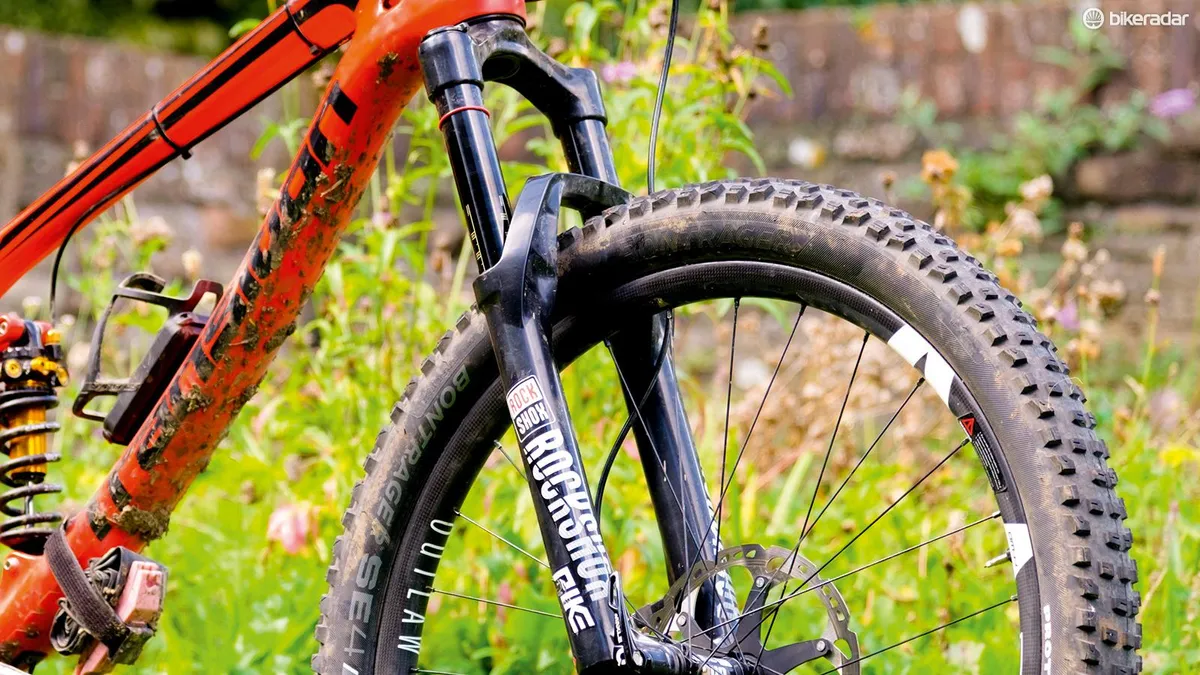RockShox has revamped the venerable Pike trail fork with a new chassis, damper and air spring. As well as shaving off a bit of weight, the new chassis makes the line-up far simpler — there are only two versions, one for 650b wheels and one for 29in.
Both have Boost axle spacing, which is fine for new bike builds but a pain if you want to upgrade and have non-Boost wheels. They also both have clearance for up to 2.8in tyres, so you no longer have to opt for the 29er version if you want to use 650b rubber.
- A first glimpse at the 2019 RockShox fork range
- The ultimate guide to mountain bike rear suspension systems
- Buyer's guide to RockShox suspension forks
The fork actually feels a touch stiffer than before, thanks in part to the beefed-up upper tubes (which mean the air spring can now only be tuned with RockShox’s smaller grey Bottomless Token volume spacers). If you have wheels that’ll accept them, the dropouts can now house the brand’s oversize ‘Torque Caps’, which bolster stiffness that bit further.
The new DebonAir spring has a larger negative air volume, and the Pike gets the same Charger 2 damper as the 2018 Lyrik and RS-1. On the top-end RCT3 version, you can adjust the amount of damping applied in the ‘open’ setting of the three-position low-speed compression dial.
On the trail the feel of the fork has definitely been improved. Small-bump sensitivity is slightly better, but the main improvement comes in the form of more mid-stroke support. Previously, I had to increase the spring pressure to prop the fork up in corners or over repeated hits. The new Pike holds itself up better in these situations, meaning that the support is there when needed, but you still get impressive sensitivity and grip over choppy terrain.
The new air spring and the improved damper, with its Rapid Recovery rebound circuit, combine to make the new Pike a very composed fork in the majority of trail situations.

Both small and big impacts are handled in a smooth, measured way, which leads to a confident, calm feeling through the bar. The 35mm chassis means steering feels accurate and stiff when it counts, though it’s not quite on the same level as the Pike’s beefier counterpart, the Lyrik.
While some will find the Boost-only aspect frustrating, it was the position of the air spring valve that bugged a few of our testers. The air spring top cap is now sunk into the upper tube of the fork to provide better down tube clearance. This means that if the valve cap is done up tightly it can be tricky to remove.
The flipside is that the top cap itself is now easier to remove — using a cassette tool, instead of a socket as before — which makes switching out volume spacers even less of a faff.
Back-to-back testing with the Lyrik reminded me that this is still a trail, rather than enduro, fork — it’s not as stiff nor quite as supple. But the Charger 2 damper is arguably as good as Fox’s FIT4 cartridge and I’d choose the Pike chassis over Fox’s equivalent 34.

